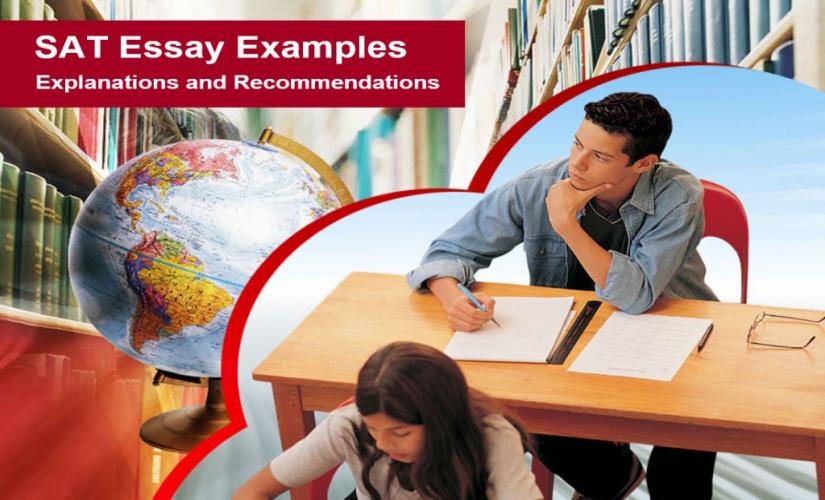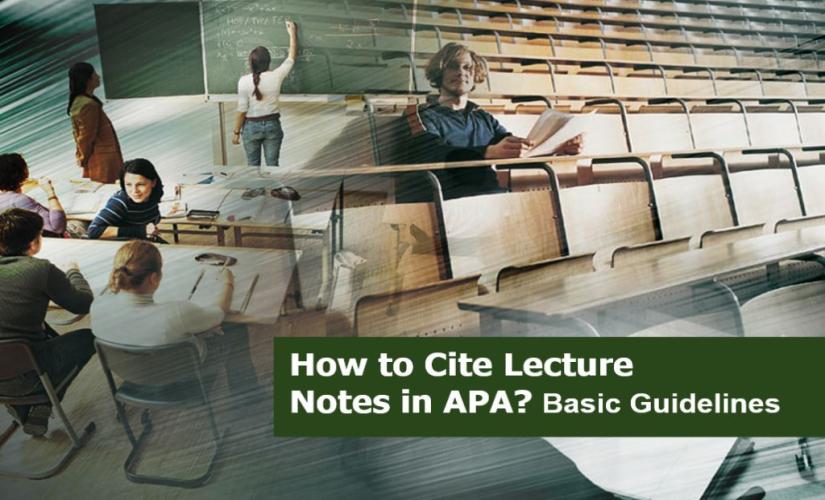When undertaking a qualitative or quantitative research project, researchers must first formulate a research question, from which they develop their theories. By definition, an assumption is a prediction that a researcher makes about an actual research question and can either be affirmative or negative. In this case, writing a research question has three main components: variables (independent and dependent), a population sample, and the relation between these variables. To find null and alternative hypotheses, scholars identify a specific research question, determine the variables involved, and state H0 as no effect or difference and H1 or Ha as a significant effect or difference. When the prediction contradicts the research question, it is referred to as a null assumption. In short, an initial theory is a statement that implies there is no relationship between independent and dependent variables. Hence, researchers need to learn how to write a good null and alternative hypothesis to present quality studies.
General Aspects
Students with qualitative or quantitative research assignments must learn how to formulate and write good research questions and proposition statements. In essence, hypothesis testing is a statistical method used to determine if there is enough evidence to reject an initial theory and support an alternative assumption based on sample data. By definition, a research proposition is an assumption or prediction that a scholar makes before undertaking an experimental investigation. Basically, academic standards require such a prediction to be a precise and testable statement, meaning that researchers must prove or disapprove of it in the course of their assignment and provide alternatives if possible. In this case, the main components of a typical research assumption are variables (independent and dependent), a population sample, and the relation between these variables. To formulate a null hypothesis (H0) in quantitative research, researchers state there is no effect or difference between variables (e.g., µ1 = µ2), and, for an alternative hypothesis (H1 or Ha), they posit there is a significant effect or difference (e.g., µ1 ≠ µ2). Therefore, a research proposition is a prediction that scholars write about the relationship between two or more variables. In turn, a standard research inquiry is a particular process that seeks to answer a specific research question and, in the process, test a particular theory by confirming or disapproving it.

Types of Hypotheses
There are several types of hypotheses, including null, alternative, directional, and non-directional assumptions. Basically, a directional hypothesis is a prediction of how an independent variable affects a dependent variable. In contrast, a non-directional hypothesis predicts that an independent variable influences a dependent variable but does not specify how. Regardless of the type, all propositions are about predicting the relationship between independent and dependent variables. To write H0 (null assumption) and H1 or Ha (alternative prediction), researchers clearly state H0 as a central assumption of no effect or no difference (e.g., µ1 = µ2) and H1 or Ha as a secondary assumption of a significant effect or difference (e.g., µ1 ≠ µ2).
What Is a Null Hypothesis (H0) and Its Purpose
According to its definition, a null hypothesis is a foundational statement in statistical testing that posits there is no significant effect, relationship, or difference between groups or variables within a given study. In simple words, a null hypothesis, usually symbolized as “H0,” is a statement that contradicts an actual research theory (Watt & Collins, 2019). The main purpose of writing a null hypothesis is to provide a basis for comparison, allowing researchers to determine whether there is sufficient evidence to reject this assumption in favor of an alternative theory, which suggests a real effect or relationship. As such, it is a negative statement, indicating that there is no relationship or connection between independent and dependent variables (Harrison et al., 2020). By starting with a null proposition, researchers can also employ various statistical tests to evaluate an entire data, ensuring the objectivity of findings and minimizing their bias. The process helps to ensure the validity of scientific research, minimizing the likelihood of drawing incorrect conclusions from the data collected. Moreover, by testing an initial theory, researchers can determine whether the inquiry results are due to the chance or the effect of manipulating a dependent variable (McNulty, 2022). In most instances, a null assumption corresponds with an alternative theory, a positive statement that covers a relationship that exists between independent and dependent variables. Finally, it is highly recommended that researchers should write an alternative assumption first before a null proposition.
What Is an Alternative Hypothesis (H1 or Ha) and Its Purpose
According to its definition and opposite to a null assumption, an alternative hypothesis in research is another statement in statistical testing that suggests there is a significant effect, relationship, or difference between groups or variables in a given study. Basically, this statement contrasts with what a null theory posits, which asserts that no such effect or relationship exists (Baker, 2021). The main purpose of writing an alternative hypothesis is to guide researchers in testing and validating new theories or effects and determine whether the observed data can provide evidence against a null proposition. The process involves comparing observed results to what would be expected under a null assumption. When statistical tests provide enough evidence to reject an initial postulation, an alternative theory becomes true, indicating that the observed effect or relationship is likely real and not due to random variation (Jawlik, 2016). By framing their research around an alternative hypothesis, scientists can focus their investigations on discovering meaningful effects and relationships, thereby advancing knowledge and understanding in their study fields. Hence, writing good null and alternative hypotheses is important because they provide a structured framework for statistical testing, allowing researchers to objectively evaluate evidence and draw conclusions about the presence of significant effects or relationships in an entire data.
Null vs. Alternative Hypothesis Formats
| Aspect | Null Assumption (H0) | Alternative Prediction (H1 or Ha) |
|---|---|---|
| Meaning | Assumes no effect or relationship | Assumes a significant effect or relationship |
| Purpose | Serves as a default or baseline assumption | Provides a specific direction for research |
| Claim | No difference or effect exists | A difference or effect exists |
| Statistical Testing | Basis for comparison | Sought to be supported by rejecting H0 |
| Example (Means) | µ1 = µ2 | µ1 ≠ µ2, µ1 > µ2, or µ1 < µ2 |
| Example (Proportions) | p1 = p2 | p1 ≠ p2, p1 > p2, or p1 < p2 |
| Role in Research | Used to test for significance of results | Indicates a presence of an effect if H0 is rejected |
| Decision Making | Retain H0 if there is insufficient evidence to reject | Accept H1 or Ha as an alternative option if there is sufficient evidence to reject H0 |
| Result Interpretation | Observed effect is due to chance | Observed effect is real and not due to chance |
| Scientific Inquiry | Maintains objectivity and prevents false positives | Provides alternative discovery and theory testing |
Steps on How to Write a Good Null and Alternative Hypothesis
- Identify a Specific Research Question: Start with clearly defining a particular problem or phenomenon you want to study.
- Determine Key Variables: Identify independent and dependent variables involved in your study.
- State a Specific Null Hypothesis (H0): Formulate a concrete statement that suggests no effect, no difference, or no relationship between your variables. This is usually a statement of equality (e.g., µ1 = µ2).
- State a Clear Alternative Hypothesis (H1 or Ha): Formulate another statement that suggests a significant effect, difference, or relationship between your variables. This is usually a statement of inequality (e.g., µ1 ≠ µ2, µ1 > µ2, or µ1 < µ2).
- Use Statistical Language: Express your assumptions in terms of population parameters. For example:
- Means: H0: µ1 = µ2 vs. H1: µ1 ≠ µ2
- Proportions: H0: p1 = p2 vs. H1: p1 ≠ p2
- Consider the Type of Test: Determine whether a one-tailed test or a two-tailed test is appropriate for your research question:
- One-tailed test: If you are testing for a specific direction of effect (e.g., H1: µ1 > µ2).
- Two-tailed test: If you are testing for any difference, regardless of direction (e.g., H1: µ1 ≠ µ2).
- Consult Literature: Review existing research to see how similar or alternative theories have been formulated. This can provide guidance and ensure your expectations are aligned with standard practices in your field.
- Write in Simple Terms: Ensure both null and alternative theories are stated clearly and concisely, making them easy to understand.
- Review and Refine: Double-check your propositions for clarity and correctness. Make sure they are mutually exclusive and collectively exhaustive, covering all possible outcomes.
- Seek Feedback: Discuss your approaches with peers or advisors to ensure they are logical, relevant, and testable. Adjust as necessary based on their input.
Note: A null hypothesis is a specific statement assuming no effect or difference, while other hypotheses refer to general statements that include writing null and alternative hypotheses and proposing possible outcomes to be tested.
Written Examples of Research Questions With H0 and H1 Hypotheses
Before developing any study proposition, a researcher must formulate a specific research question. In this case, a research hypothesis is a broad, testable statement about the expected relationship between variables, while a statistical hypothesis specifically refers to writing null and alternative hypotheses used in statistical testing to validate or refute an initial study assumption (O’Donnell et al., 2023). Then, the next step is to transform this study question into a negative statement that claims the lack of a relationship between independent and dependent variables. Alternatively, researchers can change the question into a positive statement that includes a relationship that exists between the variables. In turn, this latter statement becomes an alternative hypothesis and is symbolized as H1 or Ha. Hence, some of the examples of research questions and hull and alternative hypotheses are as follows:
Research Question (RQ) 1: Do physical exercises help individuals to age gracefully?
- A Null Hypothesis (H0): Physical exercises are not a guarantee for graceful old age.
- An Alternative Hypothesis (H1): Engaging in physical exercises enables individuals to remain healthy and active into old age.
RQ 2: What are the implications of therapeutic interventions in the fight against substance abuse?
- H0: Therapeutic interventions are of no help in the fight against substance abuse.
- H1: Exposing individuals with substance abuse disorders to therapeutic interventions helps to control and even stop their addictions.
RQ 3: How do sexual orientation and gender identity affect the experiences of late adolescents in foster care?
- H0: Sexual orientation and gender identity have no effects on the experiences of late adolescents in foster care.
- H1: The reality of stereotypes in society makes sexual orientation and gender identity factors complicate the experiences of late adolescents in foster care.
RQ 4: Does income inequality contribute to crime in high-density urban areas?
- H0: There is no correlation between income inequality and incidences of crime in high-density urban areas.
- H1: The high crime rates in high-density urban areas are due to the incidence of income inequality in those areas.
RQ 5: Does placement in foster care impact individuals’ mental health?
- H0: There is no correlation between being in foster care and having mental health problems.
- H1: Individuals placed in foster care experience anxiety and depression at one point in their life.
RQ 6: Do assistive devices and technologies lessen the mobility challenges of older adults with a stroke?
- H0: Assistive devices and technologies do not provide any assistance to the mobility of older adults diagnosed with a stroke.
- H1: Assistive devices and technologies enhance the mobility of older adults diagnosed with a stroke.
RQ 7: Does race identity undermine classroom participation?
- H0: There is no correlation between racial identity and the ability to participate in classroom learning.
- H1: Students from racial minorities are not as active as white students in classroom participation.
RQ 8: Do high school grades determine future success?
- H0: There is no correlation between how one performs in high school and their success level in life.
- H1: Attaining high grades in high school positions one for greater success in the future personal and professional lives.
RQ 9: Does critical thinking predict academic achievement?
- H0: There is no correlation between critical thinking and academic achievement.
- H1: Being a critical thinker is a pathway to academic success.
RQ 10: What benefits does group therapy provide to victims of domestic violence?
- H0: Group therapy does not help victims of domestic violence because individuals prefer to hide rather than expose their shame.
- H1: Group therapy provides domestic violence victims with a platform to share their hurt and connect with others with similar experiences.
Symbols and Signs in Writing
| Aspect | Null Theory (H0) | Alternative Proposition (H1 or Ha) |
|---|---|---|
| Symbols | H0 | H1 or Ha |
| Equality Sign | = | ≠ |
| Greater Than Sign | Not used | > |
| Less Than Sign | Not used | < |
| Means | µ1 = µ2: No difference in population means | µ1 ≠ µ2: Population means are different |
| Proportions | p1 = p2: No difference in population proportions | p1 ≠ p2: Population proportions are different |
| p1 > p2: Proportion of population 1 is greater than proportion of population 2 | ||
| p1 < p2: Proportion of population 1 is less than proportion of population 2 | ||
| Testing Approach | Serves as a default assumption; tested to be retained or rejected | Provides an alternative claim to be tested for evidence |
| Outcome if Accepted | Indicates that the observed data is due to chance in a null theory | Indicates that the observed data shows a true effect or relationship as an alternative to a null statement |
Common Mistakes
- Ambiguity in Theories: Writing vague or unclear null and alternative assumptions.
- Directional vs. Non-Directional Confusion: Confusing one-tailed (directional) and two-tailed (non-directional) claims.
- Using Sample Statistics: Stating initial and alternative propositions in terms of sample statistics instead of population parameters.
- Overlapping Assumptions: Creating null and alternative statements that are not mutually exclusive.
- Testing Multiple Variables: Including multiple variables or conditions in a single theory.
- Misinterpreting a Null Proposition: Assuming an initial statement is what you want to prove.
- Incorrect Symbols and Signs: Using incorrect or inconsistent symbols and signs for writing null and alternative propositions.
- Ignoring Context: Writing initial and alternative theories that are not relevant to an assigned research question or context.
- Not Testable Hypotheses: Formulating null and alternative statements that are not testable with the available data or methods.
- Confusing Null and Alternative Hypotheses: Swapping the roles of null and alternative assumptions.
Summing Up
The formulation of research questions in qualitative and quantitative assignments helps students to develop a specific theory for their experiments. In this case, learning how to write a good null and alternative hypothesis helps students and researchers to make their research relevant. Basically, the difference between a null and alternative hypothesis is that the former contradicts an entire research question, while the latter affirms it. In short, an initial proposition is a negative statement relative to a particular research question, and an alternative theory is a positive assumption. Moreover, it is important to note that developing a null hypothesis at the beginning of the assignment is for prediction purposes. As such, the research work must answer a specific research question and confirm or disapprove of an initial proposition. Hence, some of the tips that students and researchers need to know when developing any theory include:
- Formulate a research question that specifies the relationship between an independent variable and a dependent variable.
- Develop an alternative assumption that says a relationship exists between the variables.
- Develop a null proposition that says a relationship does not exist between the variables.
- Conduct an experiment to answer a research question under analysis, which allows the confirmation of a disapproval of a null theory or considering alternative options.
References
Baker, L. (2021). Hypothesis testing: How to choose the correct test (Getting started with statistics). Chi-Squared Innovations.
Harrison, A. J., McErlain-Naylor, S. A., Bradshaw, E. J., Dai, B., Nunome, H., Hughes, G. T. G., Kong, P. W., Vanwanseele, B., Vilas-Boas, J. P., & Fong, D. T. (2020). Recommendations for statistical analysis involving null hypothesis significance testing. Sports Biomechanics, 19(5), 561–568. https://doi.org/10.1080/14763141.2020.1782555
Jawlik, A. (2016). Statistics from A to Z: Confusing concepts clarified. John Wiley & Sons, Inc.
McNulty, R. (2022). A logical analysis of null hypothesis significance testing using popular terminology. BMC Medical Research Methodology, 22(1), 1–9. https://doi.org/10.1186/s12874-022-01696-5
O’Donnell, C. T., Fielding-Singh, V., & Vanneman, M. W. (2023). The art of the null hypothesis — Considerations for study design and scientific reporting. Journal of Cardiothoracic and Vascular Anesthesia, 37(6), 867–869. https://doi.org/10.1053/j.jvca.2023.02.026
Watt, R., & Collins, E. (2019). Null hypothesis testing. SAGE Publications Ltd.


